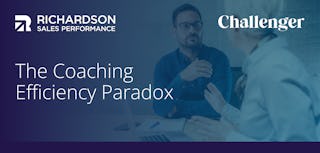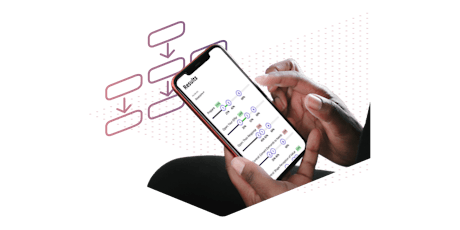How to Update Sales Talent Profiles without Tanking Your Business

Tinkering with your profile of a successful sales rep is risky business, but what can you do when you know the talent that got you where you are today won’t get you where you need to go in the future?
For example, maybe you need to transition from a product to a solution-led sale, manage accounts more strategically, or take a more assertive insight-led sales approach. Your business is constantly changing, and you probably have good reason to redefine the attributes of your future top performer. How can you make this transition to minimise risk and disruption?
The Assessment-based Approach
One way to implement new sales talent profiles is to conduct an assessment-based talent audit. This involves developing competency models for your different sales roles, assessing your people (hopefully with a valid, compliant assessment instrument), and comparing how well they compare to the model of a top performer.
Sounds simple, right? Well, there are inherent risks in this approach. Psychographic assessments can help you understand the optimal sales behaviours, but they don’t tell you what top performers actually do and what they do differently from their lower-performing peers. The assessment only tells part of the story. Additionally, the results are based on probabilities and need to be carefully validated over time to determine if the profile is truly predictive.
What happens when the assessment tells you that half of your top performers don’t fit the profile? Will you believe it? Will your sales managers buy into it? Are you prepared to bet on the new profile and manage steady performers out of the business? That type of upheaval would limit your ability to meet current goals and objectives and destabilise your business by lowering the morale of your remaining workforce. For this reason, talent audits alone may not be sufficient.

Sales Skill Assessments
Find clarity on where your team is today and where you need to go with our proprietary sales skill assessments.
Learn MoreThe Process-based Approach
Another approach is process-based. In this situation, you would define your optimal sales process, identify key performance indicators and verifiable outcomes, and force change by altering your sales management processes. This allows you to apply pressure where it is likely to produce change that aligns with your new vision. If you do this, you will also need to develop a proactive recruiting pipeline because not all people can adapt to the new processes and will leave.
With the talent-based or process-based approach, you are likely to experience high rates of attrition, and the primary by-product of attrition is disruption. Along with the loss of existing staff, you may lower morale, decreasing motivation and productivity. They key is managing the implementation of new profiles to maximise opportunities for positive change and limit disruptions.
We Recommend a Hybrid Approach
A hybrid approach combines aspects of talent audit and process development. The hybrid approach delivers the change you desire but in a more measured and gradual manner that is more likely to get buy-in from your existing team, ease the transition, and decrease disruption.
- Study behavioural differences and similarities
It’s also important to understand the differences, if any, between the two study groups to understand what you might be giving up in return for what you want to gain. For example, if you want to transition to sales reps who are proactive and assertive, you might be giving up traits that build trust and relationships in return. This might be good or bad for your business, but if you need to make tradeoffs, it is better to make these decisions with your eyes wide open.
- Build on what works
Capitalising on existing successful practises also makes your new profiles feel homegrown, diluting the instinct to resist change. Your study should extend beyond those who have a history of success. For example, it could include recent hires from companies that have sales practises you want to emulate.
- Create a foundation for sales managers to reinforce desirsed behaviours
Having a process enables you to identify verifiable outcomes to determine if the process is being executed and metrics to measure the effectiveness of execution. These give your sales managers more substance to manage to and reinforce the behaviours you are trying to change. If your managers have even basic metrics and adequate skills and know the right questions to ask, they can coach sales reps more effectively.
Predictive metrics also give sales reps a sense of control over their changing environment because they know what is expected and how they will be measured. Greater understanding leads to greater comfort and less disruption.

SkillGauge Sales Assessment Brochure
Learn about all of the assessment tools Richardson Sales Performance has to offer.
DownloadGet industry insights and stay up to date, subscribe to our newsletter.
Joining our community gives you access to weekly thought leadership to help guide your planning for a training initiative, inform your sales strategy, and most importantly, improve your team's performance.






